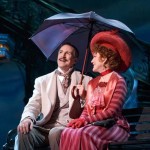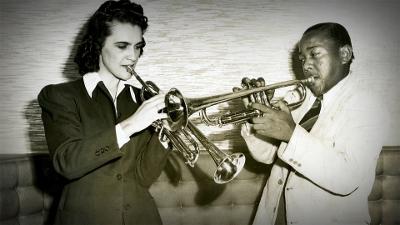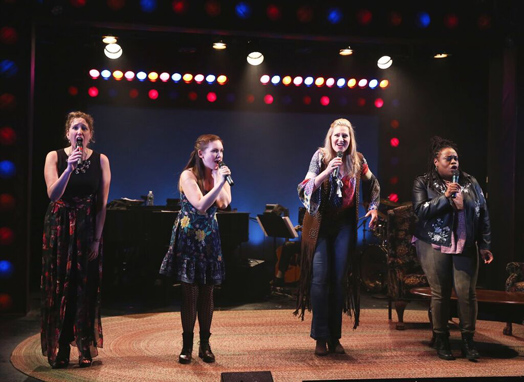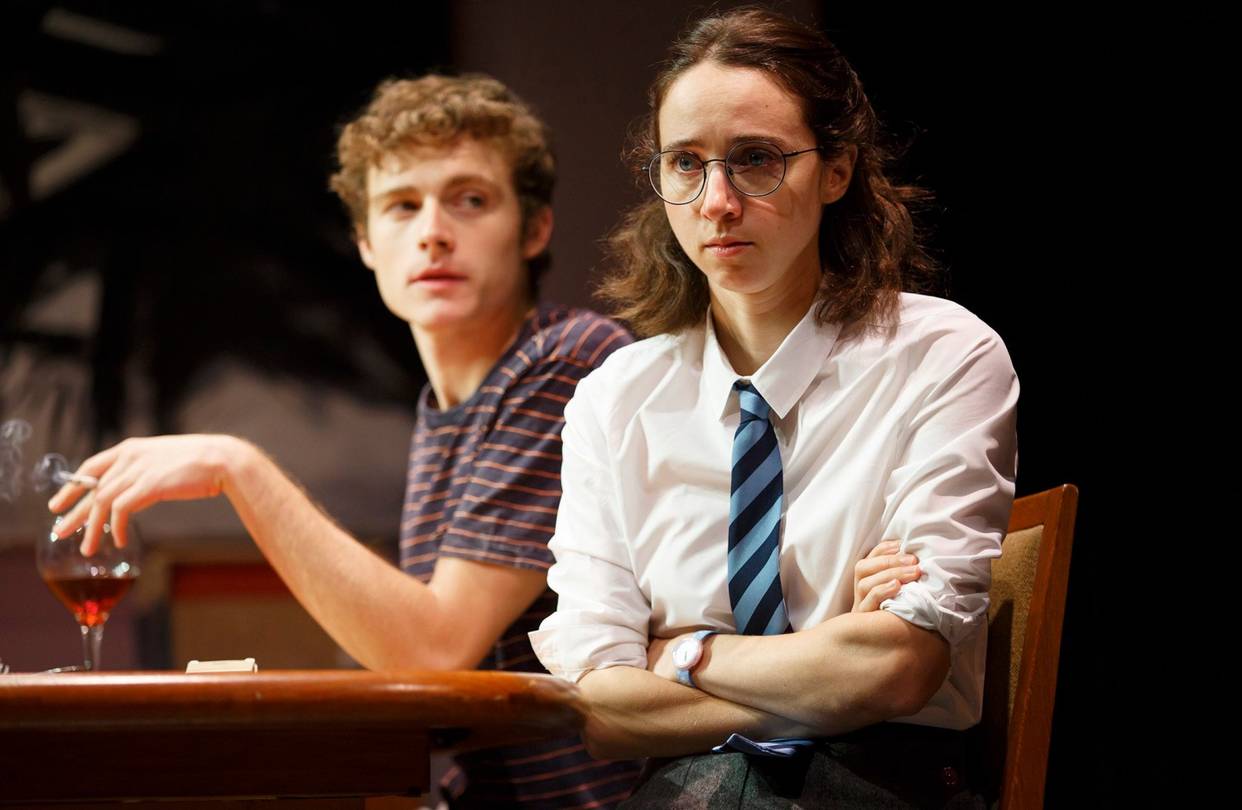Review by Samuel L. Leiter


This is Gigi’s first Broadway revival; it’s actually an adaptation, by Heidi Thomas, of the 1973 show, with significant changes, including the song list and the placement of the songs. For example, as in the movie, the aging roué Honoré Lachaille (currently played by Howard McGillin) opens and closes the 1973 version with “Thank Heaven for Little Girls,” but, for fear of suggesting that Honoré is a lecher, the new incarnation reassigns it to Gigi’s (Vanessa Hudgens, of TV’s “High School Musical”) grandmother, Mamita (Victoria Clark) and her Aunt Alicia (Dee Hoty), who sing it later in the show.
The song, however, is intended to reveal Honoré’s delight in young girls as potential lovers after they grow up. We can certainly point to plenty of June-December matches that, while distasteful to some, are perfectly legal. The switch does a disservice to the show, which should be partly an exposé of the decadence of Belle Époque Paris and partly a celebration of the boulevardier’s vanished lifestyle.
The innocuous “It’s a Wide, Wide World,” sung by Gigi, served as the unlikely eleven o’clock number in 1973, replacing Gigi’s “Say a Prayer” from the movie. “Say a Prayer,” however, now has been retrieved for Mamita, who, because she’s played by the wonderful Clark, turns it from a pleasant little ballad into a showstopper. “It’s a Wide, Wide World” has been vaporized.
Both film and stage versions pussyfoot around Colette’s subject, the training of the teenage Gigi for life as a demimondaine, which means she’ll grow up to become the mistress of a wealthy man who’ll set her up in high style. Gigi, dressed in schoolgirl clothing, shows few signs of knowing what’s in store for her. However, when the sugar baron Gaston (Corey Cott), a friend of Mamita’s who behaves like Gigi’s older brother, realizes she’s flowered and decides to deflower her by making her his mistress, she revolts and declares she has no interest in being a paid bed partner who’ll one day be discarded. Given the innocence with which she’s been shown (Ms. Hudgens even sings a song added from the film, “The Parisians,” mocking the town’s obsession with making love), even the word “bed” from her mouth sounds icky.
Interestingly, Gigi has striking similarities to Lerner and Loewe’s My Fair Lady, their giant 1956 hit. In My Fair Lady Henry Higgins wagers he can turn the lowly Eliza into a princess. In Gigi, Aunt Alicia is Gigi’s Higgins, training her in the etiquette needed for a classy courtesan. Higgins is unwilling to accept that he’s fallen in love with Eliza, singing “I’ve Grown Accustomed to Her Face” simultaneously annoyed with her but unable to deny his affection. Gaston goes through precisely the same hoops when he sings “Gigi,” shifting back and forth from anger to fondness. One could practically transpose the songs, calling “Gigi” “Liza.”
Director Eric Schaffer’s eye-filling production is lavish, with lots of conventional Broadway choreography by Joshua Bergasse (the movie has barely any dance), and wondrous lighting by Natasha Katz. Derek McLane has provided a lovely art noveau unit setting of an exquisite staircase into and around which different units slide and fly, and Catherine Zuber’s costumes are beautiful. Still, the show runs out of fizz, despite the cascade of bubbles at the final curtain. The suspense of waiting for Gigi to morph into a gorgeous butterfly and for Gaston to discover that he is to marry her subsides quickly, and we wait impatiently for it all to be over.
Much of the film’s appeal is its sumptuousness, the way it reflects 1900 Paris as seen in the illustrations of Georges Goursat (1863-1934), a.k.a. Sem. Many nonmusical passages would be lifeless without the exquisite world shown around them. When Gigi transferred to the stage, it could only hint at this world. The avoidance of foreign accents is another weakness; the movie had French actors in three major roles, and a Hungarian in another. The determinedly American Ms. Hudgens, who hits double “t” consonants with a sledgehammer, doesn’t help.
Otherwise, the diminutive star dances and sings effectively, making a respectable Broadway debut. McGillin’ Honoré is elegant and sings with power, but his charm is forced, making the man a cardboard cutout. Dee Hoty’s haughty Aunt Alicia broadens an already broad character, while Cott’s Gaston, who sings beautifully but has a notably boyish speaking voice, is more a shallow undergraduate than a notoriously louche playboy; casting Gaston with a 25-year-old (the movie’s Louis Jourdan was 37) so as to make his relationship with Gigi more palatable is another misstep. Fortunately, Clark, with her several songs, solo and shared, provides a takeaway performance we can long remember.
If anyone’s considering Broadway stagings of the other 1950s Caron movie musicals, Daddy Long Legs or Lili (already adapted as Carnival), I’d suggest that maybe it’s time they give it a break.
*Photos: Margot Schulman
Gigi
Neil Simon Theatre
250 W. 52nd Street, NYC
Open run – 2hrs. 30 minutes

























